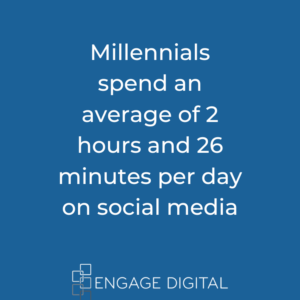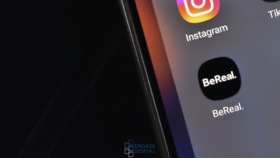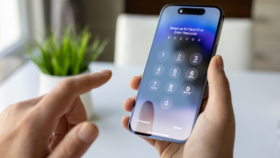Millennials remain a vital demographic for marketers, specifically for their long-term value to a brand. Currently, there are nearly 88 million millennials in the world, which marks them as the largest demographic in the country. They are also the generation with the most members in the workforce, with an expected $1.4 trillion in disposable income by the beginning of the decade.
Still, millennials haven’t hit their peak in terms of purchasing power. Blame student loans and family debts. Because of their population, this group is the next baby boomers in terms of economic value. Although their debt may burden them now, they will get richer over time. It’s tricky to market to a generation with so much diversity; campaigns much touch on a variety of elements to appeal to all these groups.
Who are Millennials?
Millennials are individuals who were born between 1980 to 2000. Within that timeframe, the advent of the internet took over our global communication landscape. In the span of those two decades, cell phones became prevalent in society. This generation dismisses the must-haves for previous generations. They often put off major purchases; their affinity for technology has effectively reshaped the retail space. They have turned toward brands that offer maximum convenience at the lowest costs.
Frequent economic disruption has afforded them a different set of behaviors and experiences, in comparison to their parents. They are also known as “digital natives” and are the first to dip their toes in the “sharing economy.”
Since the start of the decade, millennials report their household pretax income salary to be $71,566. By 2025, 75% of the global workforce will belong to this workforce. Can you say purchasing power?
How to Market to Millennials
They are digital window shoppers, digital socialites, and dynamic media junkies. Because of their tech savviness and engagements, this generation has developed an emerging technocracy of highly influential media users, who are passing their behaviors down to Generation Z.
Compared to Generation X and baby boomers, millennials spend their income in a broader range of activities; their online shopping is nearly double any previous demographics.
Here are some characteristics in regard to millennial personas:
Understanding Millennials

Tapping into this demographic’s mindset is important. Because millennials have grown up surrounded by advertising — constantly exposed at all times — they are inherently skeptical when it comes to such efforts. They are quick to detect schemes or inauthentic content over real substance. Primarily, they are decentralized, conducting their own research to develop their opinions. In turn, marketing efforts are adapting a personal and engaging stance, particularly through social media marketing. Brands cut through the nonsense and alert their prospects in a non-intrusive way, finding a healthy (albeit tricky) balance between brand awareness and product promotion.
Of course, there are always new and improved products entering the market constantly. However, such entrants are of little concern to millennials. The demographic is content with staying settled, often choosing the same brand as their parents. There’s As a result, there’s of inherent long-term brand loyalty in regard to this group.
Modernization
Brands and their offerings must be on the digital marketplace, in order for millennials to consider. Companies that lack a mobile-friendly website, are absent from social media platforms, or are captivated by product promotion could be considered outdated or undesirable.
Brands must befriend millennials; it’s about the relationship rather than the point of sale. Because of their digital access, millennials will research online, test the products, and seek honest reviews prior to a buy. They prefer social campaigns, web campaigns, and mobile-friendly campaigns as the primary source of their advertising. The benefit of these trends: making a social media account for your business costs you nothing. Plus, these are the major places millennials will look for information first, prior to making their decision.
Social media marketing = free opportunities to reach millennials. While Gen Z is known to be on social media more, Instagram is the most popular social media platform among millennials, with 71% of those surveyed using the app, according to the same survey by Pew Research Center. And, a survey from Sprout Social found that over 78% of millennials have made a purchase because of something they have seen on Instagram or Facebook, There is plenty of opportunity to market to, and sell too, millennials on social media.
Transparency
As mentioned before, consumers in this group don’t appreciate the old bait-and-switch method. Demonstrating open social and environmental responsibility, and following through on these decisions, could appease buyers’ considerations.
Just remember: purchasing decisions aren’t just only influenced by the millennial’s life; it’s about the impact the brand or product has on the lives of others. Their buying habits rank first in both a memorable experiences and social identity. Addressing the latter will increases a brand’s value considerably.
Expressing purpose first, then the product will reveal intentions upfront. This could include philanthropy inherent in the company culture, including: donations, non-profit, and charitable contributions.
Temptations to Switch Loyalties
Commitment to a brand goes out the window in relation to price changes. Money talks, and millennials are more open to switching brands because of price changes or alterations in their financial situation.
Additionally, the availability of something peer-recommended is another persuasive factor. Although millennials are always tuned into the internet, they are ironically pursued by a traditional marketing method; word of mouth, including feedback and complaints, are essential in creating and maintaining a positive connection.
Choose Inbounding NOT Outbounding
Outbound marketing methods are not appealing to this demographic. Instead of looking at impersonal print, mail, or radio advertisements, millennials crave connection. Inbound provides informative content that includes forums, blogs, and how-to videos.
Following these efforts make the generation feel empowered that they are making their own online choices, usually through UGC or other authentic content.






